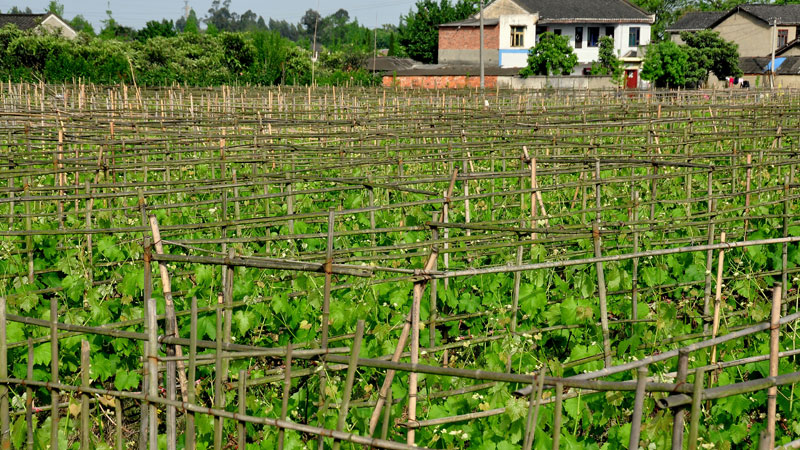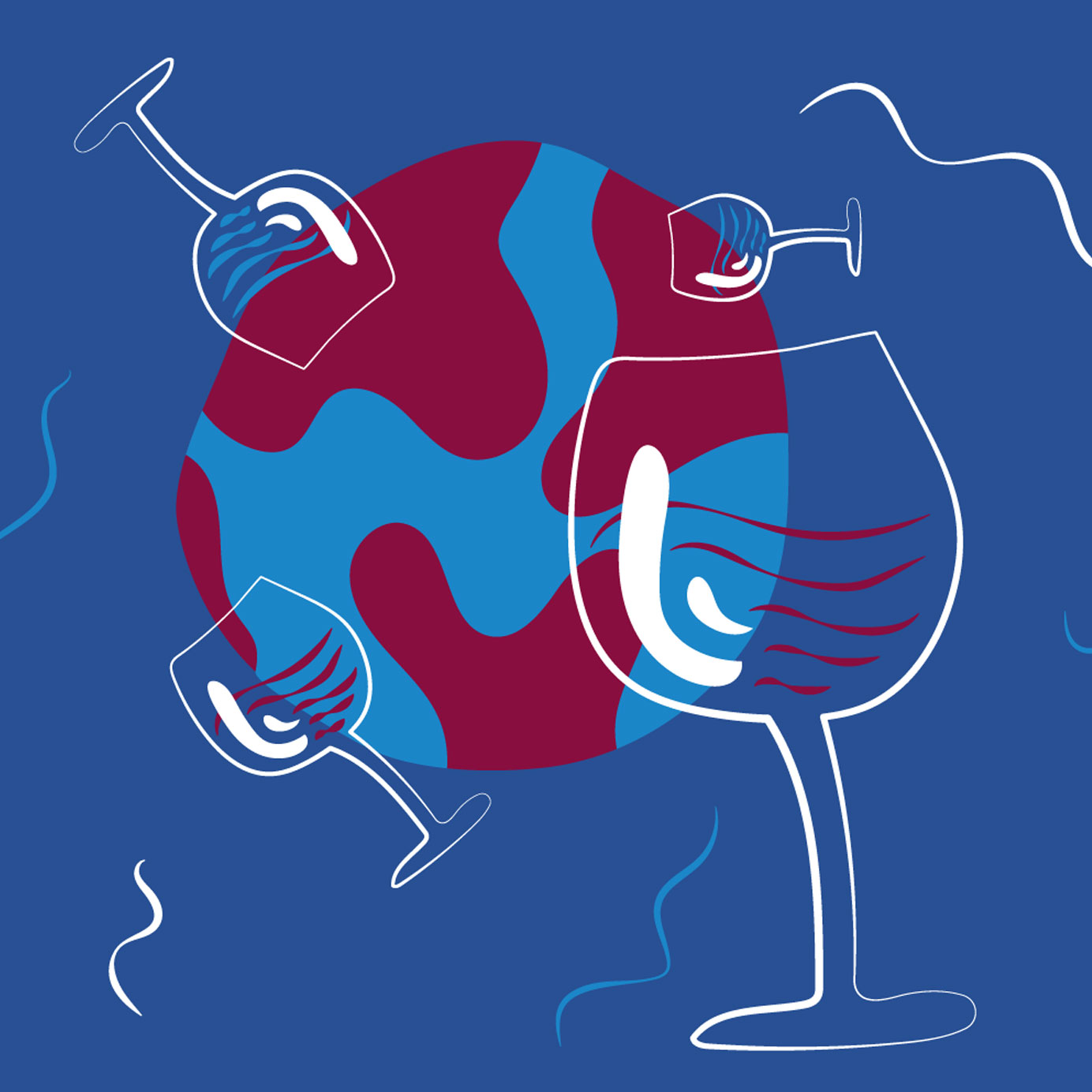Cabernet Sauvignon is an international success story, planted in almost every wine region worldwide. Its widespread popularity is a result of the grape’s remarkable versatility. One of the nine noble red varieties, Cabernet Sauvignon is equally impressive in blends and single varietal wines, and produces remarkable wines across all price points.
The Bordeaux-native variety was born as a cross between red-grape Cabernet Franc and Sauvignon Blanc. It ripens relatively late in the season, producing black-fruit-driven wines with grippy tannins. This tannic structure enables wines to age for decades, but failure to reach full ripeness in the vineyard can result in bitter-tasting “green” wines.
In cooler regions, Cabernet Sauvignon produces rigid wines that require a few years of bottle aging. To make them more approachable, winemakers blend with lower-tannin red varieties, such as Merlot. In warmer regions, the grape can easily reach full ripeness, and winemakers can choose to make varietal wines or blends, ready to drink upon release.
In its younger, fresher guise, Cabernet Sauvignon is rich in tart black fruit flavors, with herbaceous notes and the occasional hint of green bell pepper. In its richer form, the black fruit notes are super-ripe, akin to a compote or berry preserve.
Cabernet Sauvignon almost always undergoes a period of oak aging, a process that further helps soften tannins. Maturation in oak simultaneously adds some of the classic aromas and flavors associated with aged Cabernet Sauvignon, including vanilla, cedar, and cigar boxes.
From its variety of different blending partners, to numerous winemaking styles and practices, here’s everything you need to know about Cabernet Sauvignon around the world.
FRANCE
France is the world’s largest producer of Cabernet Sauvignon, with over 55,000 hectares planted. Production is centered in the grape’s native Bordeaux, particularly on the Left Bank of the Gironde Estuary, in the well-draining soils of the Médoc and Graves.
In this part of the world, Cabernet Sauvignon is the protagonist in carefully calculated blends, regularly appearing alongside Merlot and Cabernet Franc, and occasionally Petit Verdot, Carménère, and Malbec.
The Bordeaux red blend is celebrated for producing majestic wines, capable of aging for 20 to 30 years. These wines tend to be full-bodied, with tart black currant and violet notes from the grape, and cedar and cigar box notes from French oak aging. They provide fine examples of how an Old World Cabernet Sauvignon should smell and taste.
Large quantities of Cabernet Sauvignon are also grown in the southwest of France, in the Languedoc-Roussillon region. Here, the grape is typically used in large-production Vin de Pays, or IGP wines, though the region is gaining recognition for improving quality.
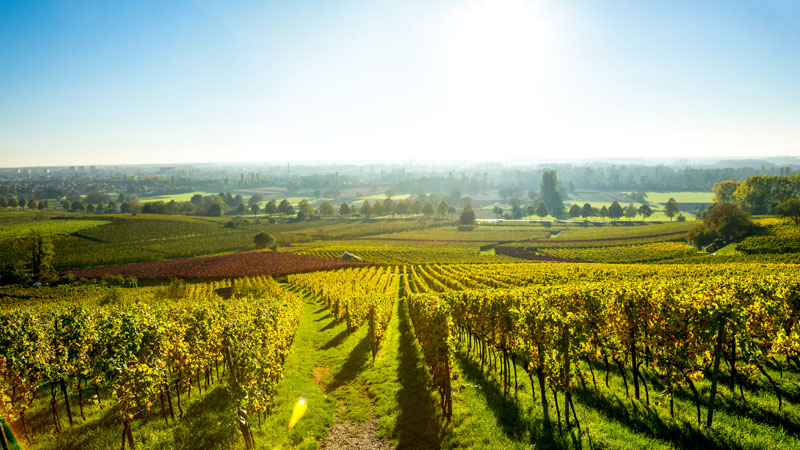
UNITED STATES
In 1976, the fate of American winemaking was sealed forever when Napa wines swept the French competition at the historic Judgement of Paris blind tasting. The victory brought attention to the previously overlooked region, and proved that New World wines could compete with their more prestigious Old World predecessors.
Tasted alongside nuanced, French-grown Cabernet Sauvignon, California grapes are richer in character, full of ripe black-fruit notes, plus sweet vanilla and chocolate flavors from aging in American oak. The region’s warmer climate, and winemakers’ tendency to leave grapes hanging until absolute ripeness, means California Cabs taste “bigger” than Bordeaux counterparts, with higher alcohol content and lower acidity.
While the majority of American Cabernet production takes place in California, where it is the leading variety, Washington State also produces notable Cabernet. With over 20,000 hectares of planted vines, Washington is America’s second-largest wine-producing state, after California. Washington Cabernet Sauvignon is noted for having all the ripeness of California fruit, with the added finesse of Old World styles.
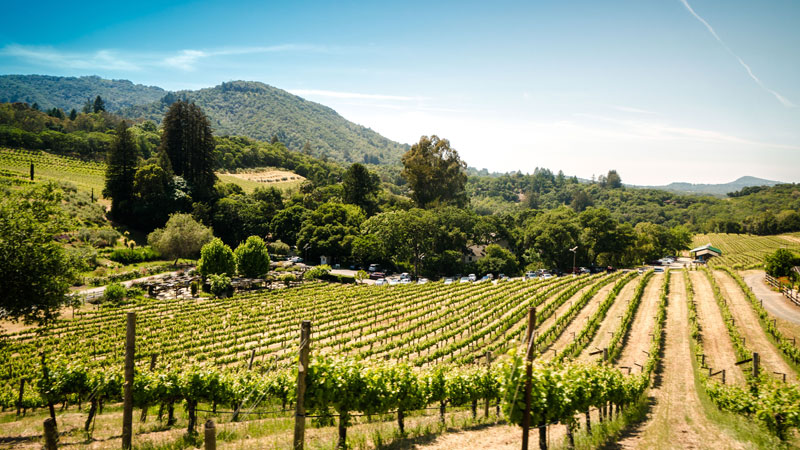
ITALY
While Cabernet Sauvignon was making waves in California in the mid-1970s, the grape was gaining notoriety in Italy. A handful of rebel Tuscan winemakers decided to plant Cabernet Sauvignon, breaking with the country’s tradition of only using native grapes. They produced a mix of Cabernet Sauvignon varietal wines and blends that included regional staple Sangiovese and other international varieties.
The inclusion of the foreign grape variety meant that these wines fell outside the DOC classification system, but their remarkable quality allowed them to succeed regardless. The unorthodox style became known as Super Tuscans.
Tuscan-grown Cabernet Sauvignon produces sweet plum and cherry flavors. Super Tuscans are also known for tobacco-like oak notes that come from French oak barrel aging (another departure from local tradition.)
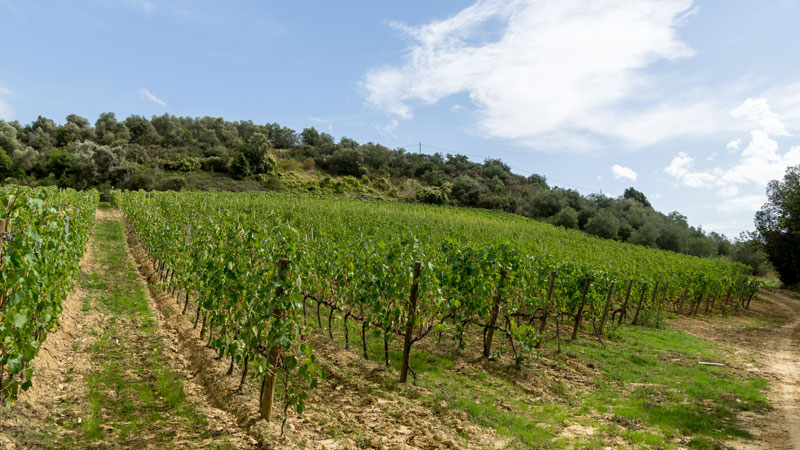
AUSTRALIA
After Shiraz, Cabernet Sauvignon is Australia’s second most planted grape. Though vines date back to the late 1800s, the first Australian Cabernet wines of note started appearing in the 1970s. Planted on the “terra rossa” soils of South Australia’s Coonawarra region, these wines were fruit-forward, with distinguishable minty overtones.
Nowadays, Cabernet Sauvignon is also notably produced in other regions of South Australia, like Barossa Valley, Clare Valley, and McLaren Vale, as well in the west of the country in Margaret River. Besides varietal wines, the grape is blended with national favorite Shiraz, which heightens its juicy black fruit character.
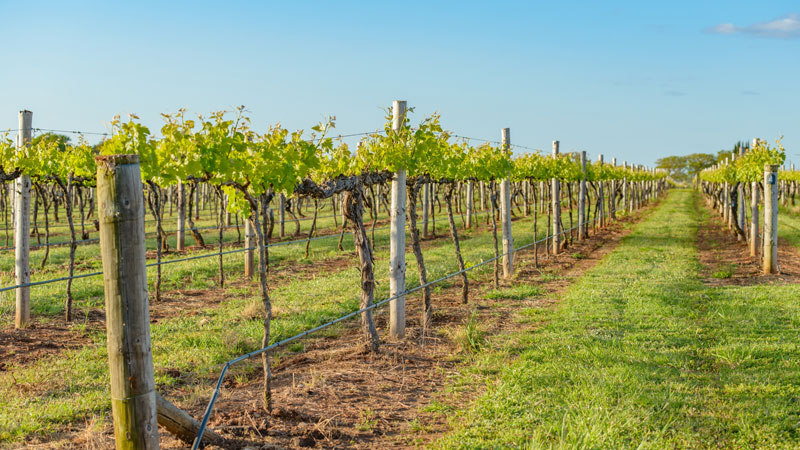
CHILE
Cabernet Sauvignon is Chile’s leading grape variety. The South American nation has a rich diversity of environmental influences, meaning that wines are produced in a number of different styles.
On the country’s valley floors, where conditions are warmer and drier, Cabernet has a riper style with softer tannins, similar to Napa Valley Cab. In areas where cooling influences from the Pacific Ocean or high-elevation plantings prevail, more structured wines abound, with higher tannin content and fresher black fruit character. These are elegant wines, resembling the Bordeaux style.
Chilean Cabernet Sauvignon appears in both single varietal form, as well as in blends with other Bordeaux varieties. As in Bordeaux, Chilean winemakers add Merlot for plumpness, while Carménère performs even better than in its native France, adding a herbaceous green character to red blends.
At lower price ranges, Chilean Cabernet Sauvignon is simple and fruity, designed to be consumed young. For more premium offerings, winemakers utilize oak and lower vineyard yields to increase complexity and age-worthiness.
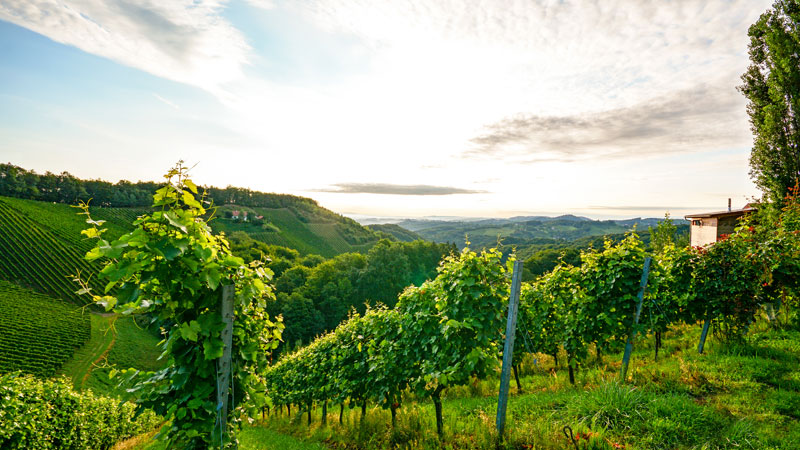
ARGENTINA
While Argentine winemaking is synonymous with Malbec, there are also significant plantings of Cabernet Sauvignon. Like Chile, simple, fresh varietal wines are abundant at entry-level price points. Top-quality Cabernet Sauvignon, often produced in the higher-altitude vineyards of the Uco Valley, receives oak-barrel aging, and is occasionally blended with Malbec, producing sophisticated wines with a velvety texture.
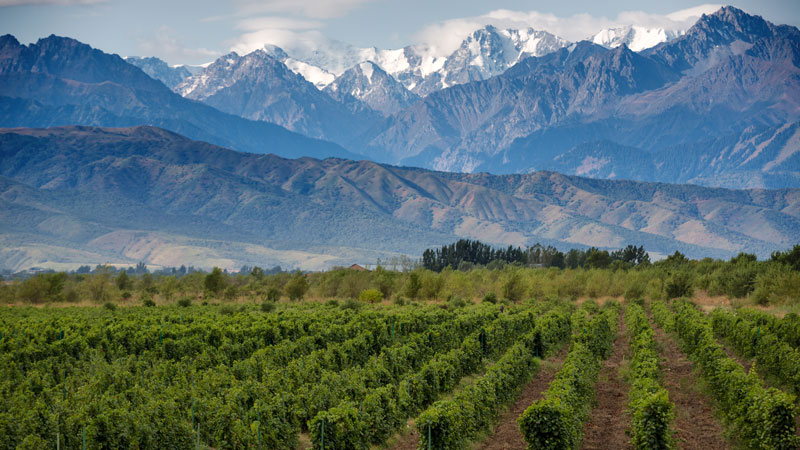
SOUTH AFRICA
As with many other regions on this list, Cabernet Sauvignon is the most widely planted red variety in South Africa. It appears in both varietal and blended forms, with some producers favoring a Bordeaux-style blend, and others combining it with Syrah (Shiraz). Its character also lies somewhere between the Old World and New World, with savory black pepper and bell pepper notes complemented by ripe black fruit.
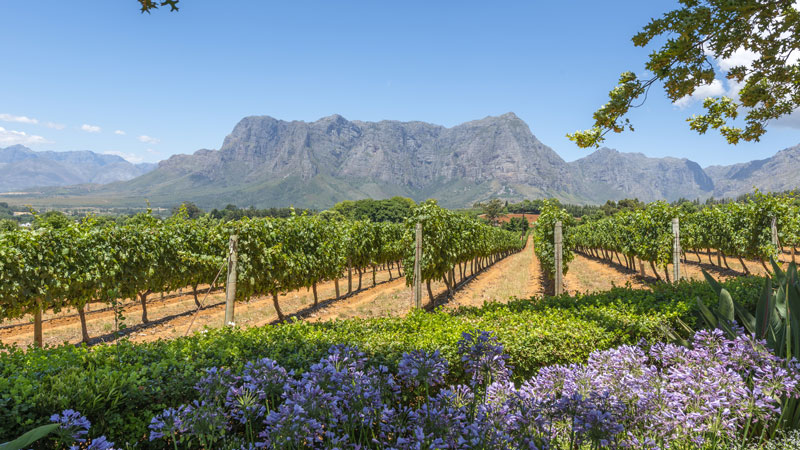
CHINA
China’s surging interest in wine is not limited to buying, and the nation is rapidly expanding into winemaking. With nine distinct regions spanning the vast country, there is still no clearly defined style of Chinese Cabernet Sauvignon, though it is the most important variety in terms of plantings, accounting for roughly 70 percent of China’s wine-producing vines.
